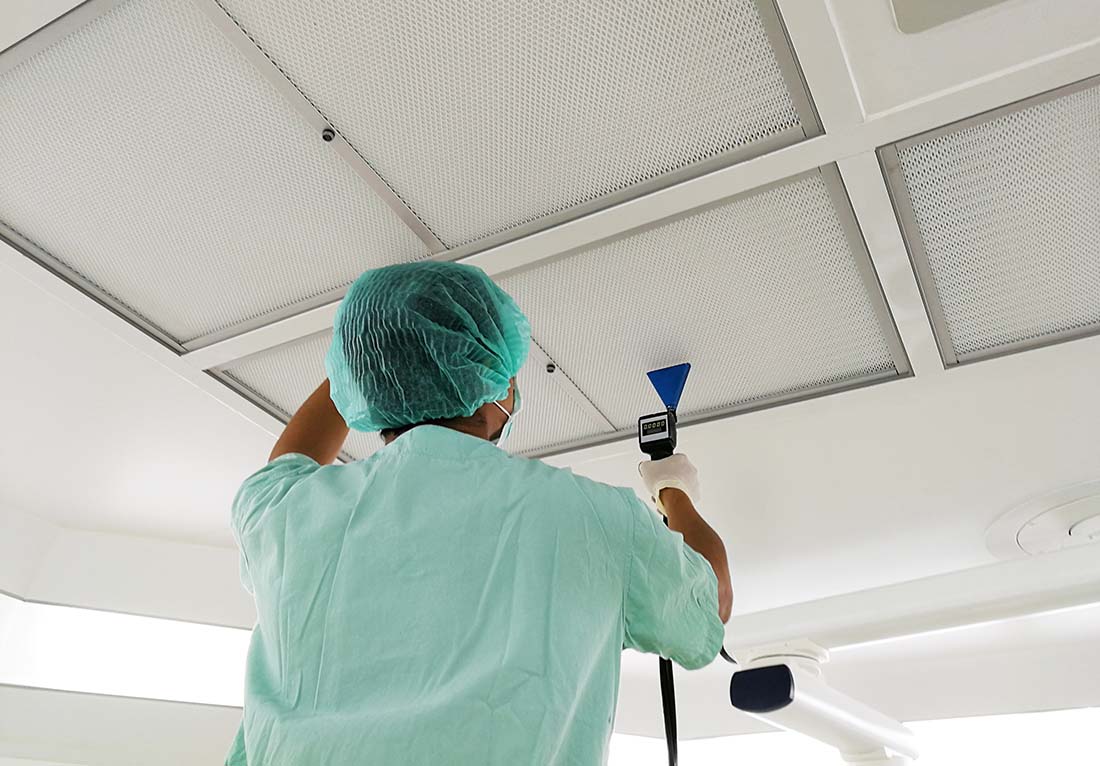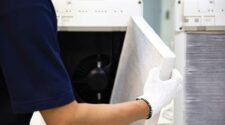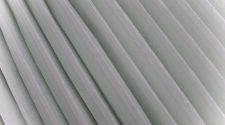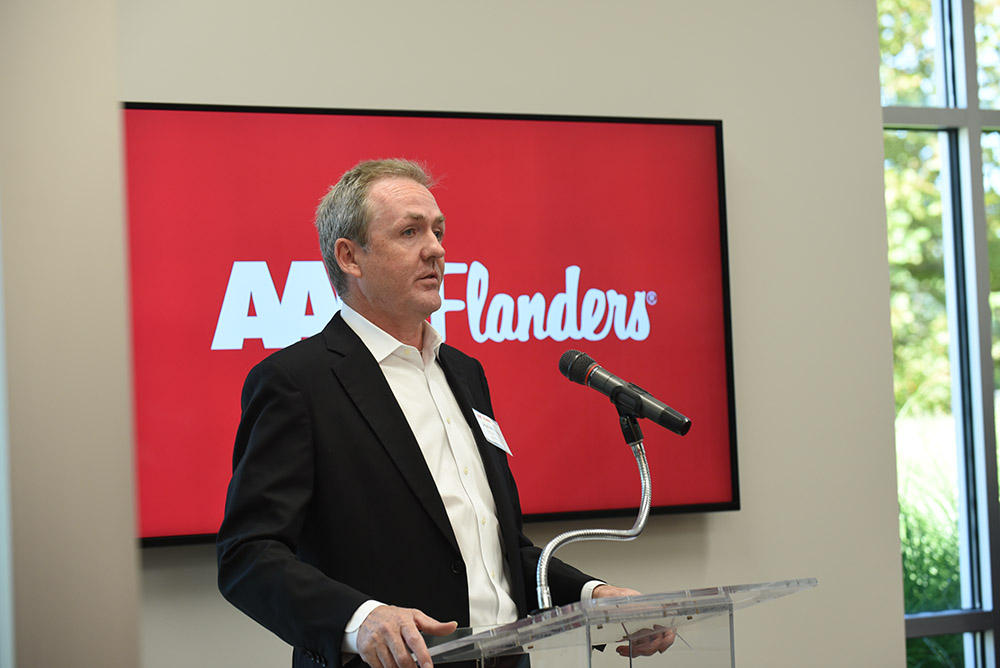At the time of this writing, 800,000 people around the world have died from COVID-19. There have been 22 million reported infections. There is growing evidence that small aerosols are a major transmission source. Social distancing, inefficient masks, and MERV 8 filters are not a viable defense when dealing with a sub-micron enemy. Without some new strategy, another million people are likely to die. A study by McIlvaine Company shows the cost will be in excess of $20 trillion.
Monetary cost is not the best metric to evaluate alternatives. A common metric measuring all harm and good based on life quality shows that the negative impact of an additional 1 million deaths and 30 million infections over the next two years justifies trillions of dollars in investment to prevent those deaths and infections.
The new indications that MERV 8 filters and inefficient masks are actually aerosol generators places the burden on the filtration industry to eliminate the tiny enemy, SARS CoV-2. While there is little direct analysis of this concept, there is a great deal of evidence. This evidence is being documented in daily alerts and is being debated and discussed in webinars presented by McIlvaine Company (See: https://bit.ly/mcilvaine-webinars).[1] At this point there is a lot of evidence to support the theory that as the large droplet evaporates, small aerosols are formed.[2] These aerosols will then pass through inefficient media.
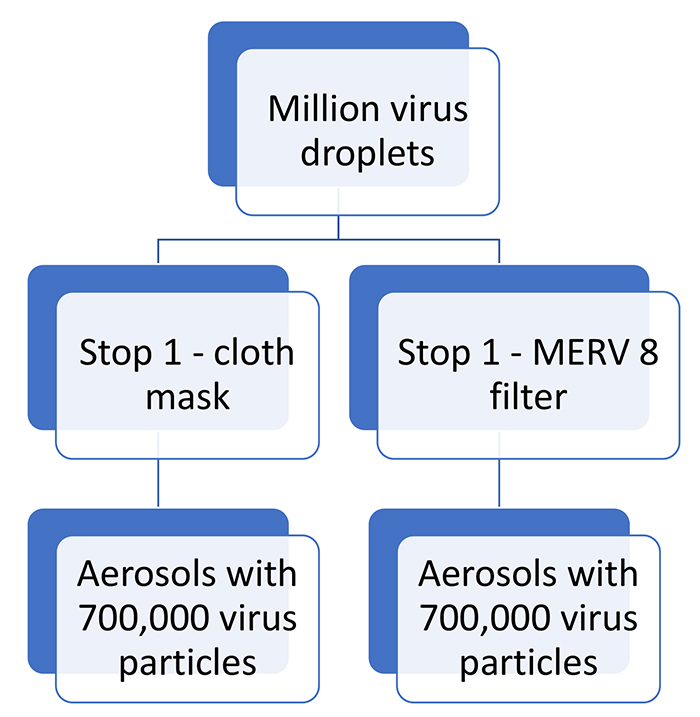
This inefficiency represents a large market opportunity for the filtration industry. It can be segmented into hardware and filters. The hardware segment can be divided into small air purifiers, larger air purifiers, fan filter units (FFUs) and systems.
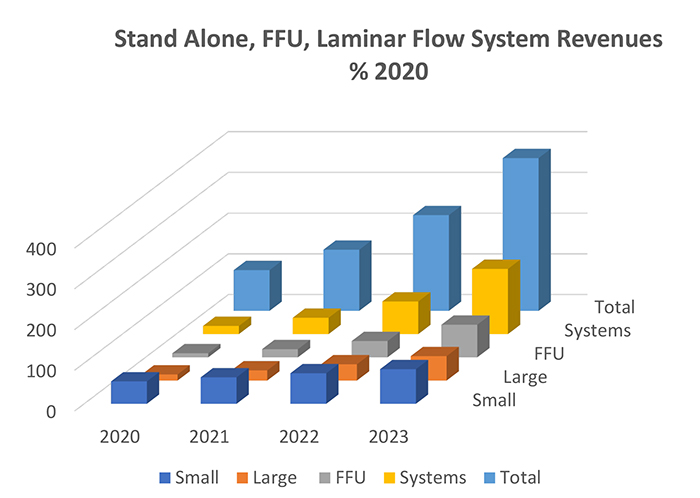
Laminar flow systems will replace partitions. An example would be an FFU above the cashier in a checkout line or above a worker in a meat processing plant. There will be a need for larger room air purifiers.
The MERV 8 and lower segment will decline in future years. There is a shortage presently of MERV 13 filters. The biggest growth by 2023 will be in the MERV 14-16 category. In terms of percentage growth, the largest increase will be in HEPA filters.
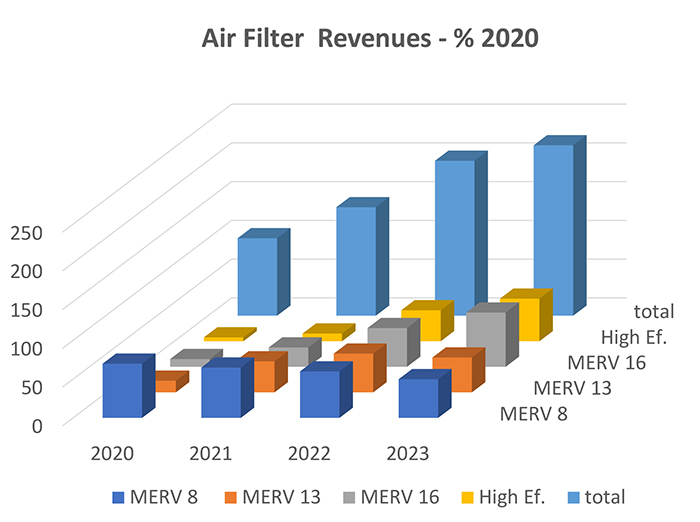
Growth is predicted through 2023 based on:
• Growing realization of the benefits of improved indoor air quality;
• Timeframe to create and distribute a viable vaccine;
• Likely 50% effectiveness rate for a vaccine; and
• Likelihood that COVID will take an annual toll as do flu viruses.
The applications for high-efficiency filters and room air purifiers worldwide have been ranked from 1 to 13 in the table below. Commercial buildings will be the largest purchasers followed by residential and then general or other industrial. Education revenues will exceed those for government and hospitals.
| High Efficiency Filter and Room Air Purifier Revenues | |||||
| Subject | Revenue Rank |
Efficiency |
Regional Rankings | ||
| Asia | EMEA | Americas | |||
| Commercial | 1 | 4 | 1 | 3 | 2 |
| Education | 4 | 4 | 3 | 2 | 1 |
| Government | 5 | 4 | 1 | 3 | 2 |
| Hospitals | 6 | 3 | 2 | 3 | 1 |
| Nursing homes | 9 | 3 | 3 | 2 | 1 |
| Food processing | 10 | 4 | 3 | 2 | 1 |
| Pharmaceutical | 11 | 2 | 2 | 3 | 1 |
| Semiconductor | 13 | 1 | 1 | 3 | 2 |
| Other healthcare | 12 | 3 | 3 | 2 | 1 |
| Other industrial | 3 | 4 | 1 | 2 | 3 |
| Residential | 2 | 5 | 1 | 3 | 2 |
| Transportation | 8 | 3 | 1 | 3 | 2 |
| Entertainment, dining, sports | 7 | 3 | 3 | 2 | 1 |
Table 3.
The semiconductor industry will be the smallest purchaser in terms of revenues, but will be the highest ranking in terms of efficiency. A large percentage of semiconductor purchases will be ULPA filters for Class 1 cleanrooms. The efficiency requirements for buildings are a combination of viral load and other contaminants. There are both indoor-generated contaminants and air pollutants introduced along with make-up air. The pharmaceutical industry requires that the viral load be reduced to a very low level. So HEPA filters are typical. The viral load is likely to be high in various forms of public transportation.
The residential requirements have the lowest average efficiency due to the lowest viral load. However, MERV 16 or higher efficiency will be the best choice even in single-family residences. Common space in multi-family dwellings would be ranked at the mid-level 3 rather than 5 for single family dwellings. HEPA air purifiers are recommended for lobbies, elevators and recreation rooms.
Each country needs a separate analysis. For example, Taiwan has had only seven deaths from COVID. It is No. 58 in the ranking of most polluted countries, yet it dominates the world semiconductor production. The fact that a relatively small country is the world’s largest supplier of semiconductors, is in mid range in terms of air quality, but a leader in COVID mitigation is testimony to the need for individual country analysis.
Monetary cost is not the best metric to evaluate alternatives. A common metric measuring all harm and good based on life quality shows that the negative impact of an additional 1 million deaths and 30 million infections over the next two years justifies trillions of dollars in investment to prevent those deaths and infections.
From an analytical perspective, it is best to group the 220 countries into relevant aggregates. This would include 72 individual countries, and then eight regional aggregations of small countries. Luxemburg and Monaco, for example, would be included in “other Western Europe.”
The filtration industry can only realize these revenues and make this major societal contribution if:
- The benefits of efficient filtration are properly communicated to scientists, government officials and purchasers;
- The industry invests in a timely manner to meet the needs;
- International collaboration prevails over extreme nationalism; and
- Sufficient investment is made in R&D to better understand and measure viruses and then to develop improvements for higher removal efficiency per unit of energy consumed.
For more information on McIlvaine’s “Coronavirus Technology Solutions” report, see http://bit.ly/mcilvaine-coronavirus-database.
References:
A free search displaying titles from McIlvaine Daily Alerts can be found at: http://www.mcilvainecompany.com/CTS_Promo_Search/search.asp
- A key word search under “generators” yields 79 articles since March 30. A search on “efficiency” yields 93 articles. A “MERV 8” search yields 33 articles. McIlvaine’s coronavirus webinar recordings on filters are available at http://home.mcilvainecompany.com/index.php/2-uncategorised/1574-coronavirus-webinars#Filters
- A keyword search under “droplet” yields 69 articles since March 30. A search on “evaporation” yields 20 articles. A search on “UCSD” links to an interview directly on the subject.


